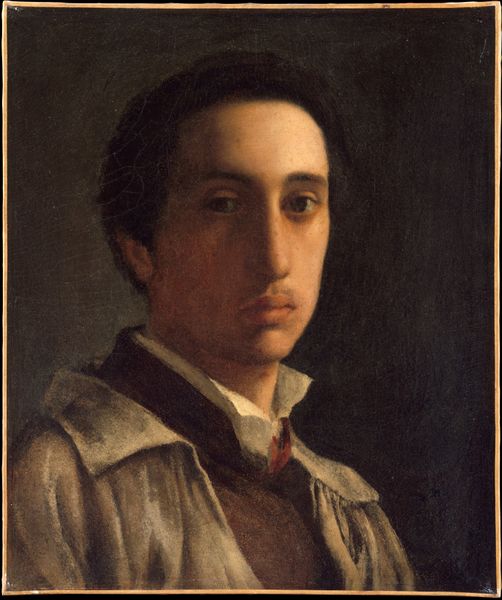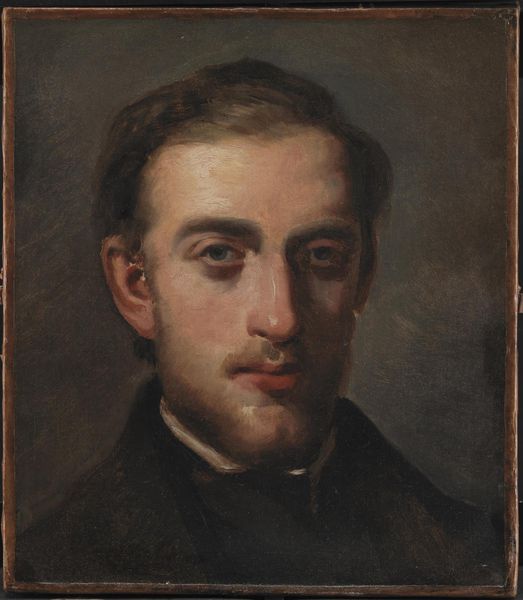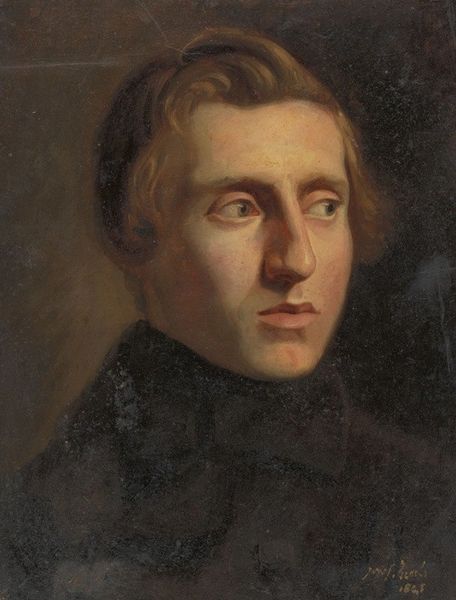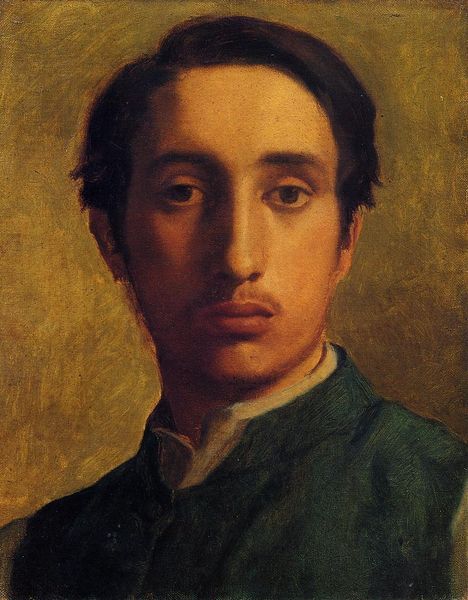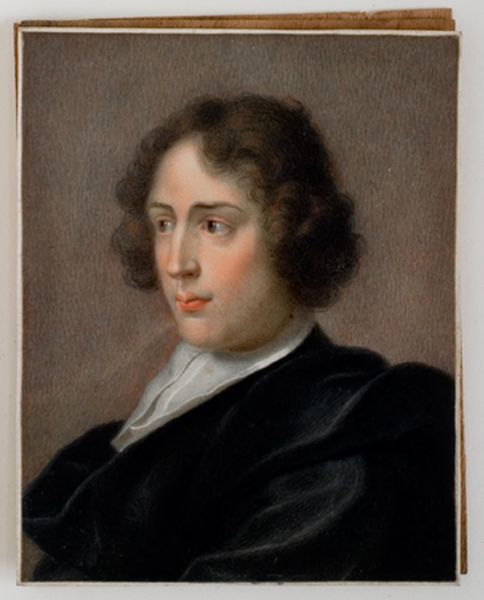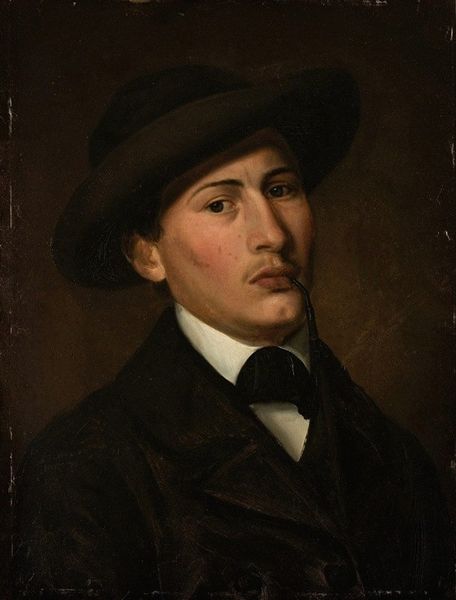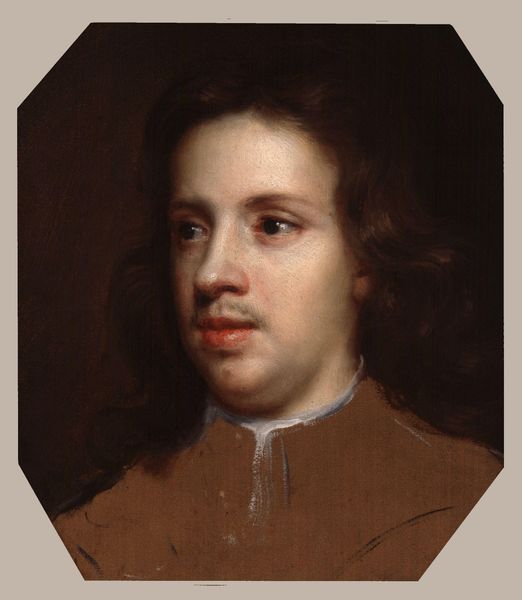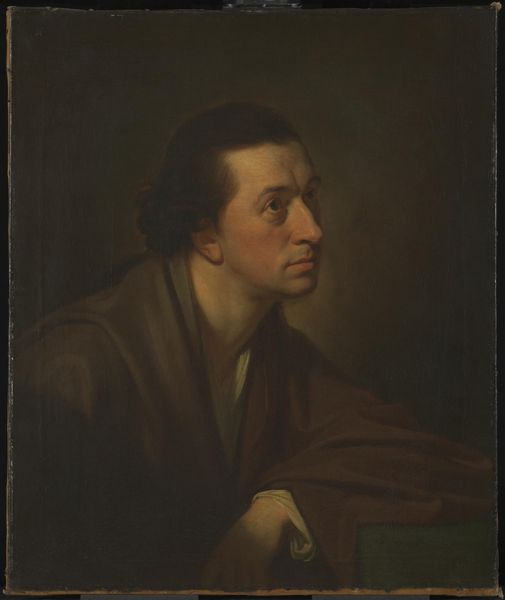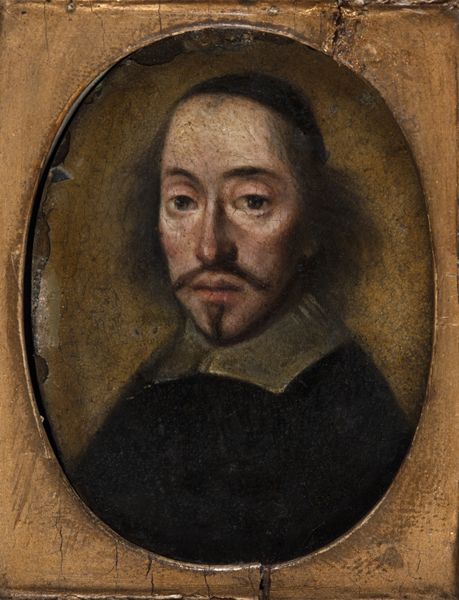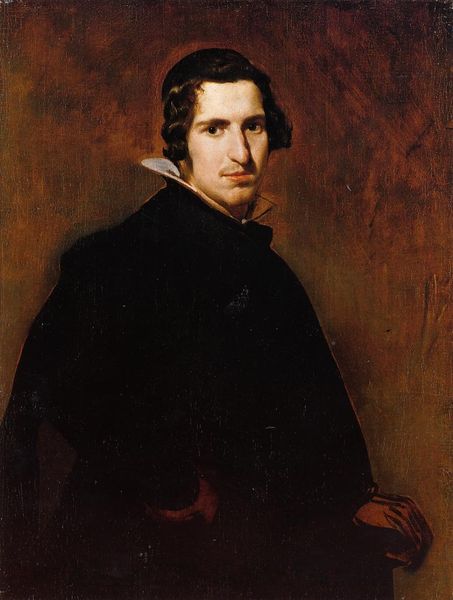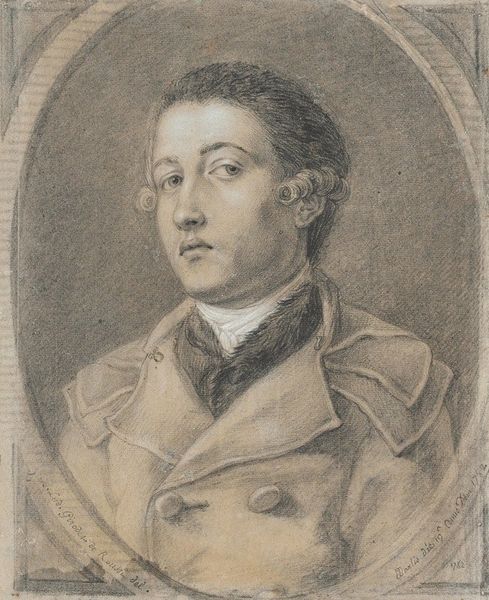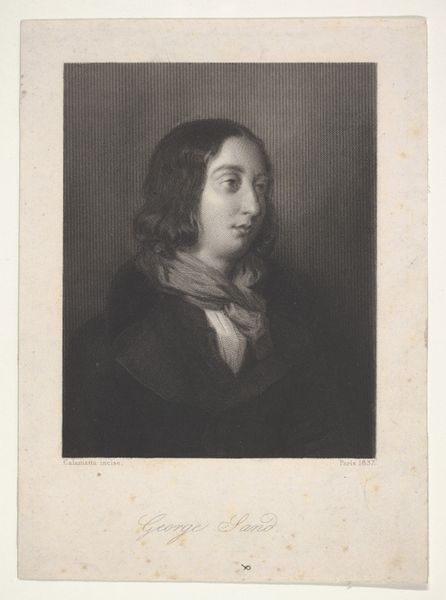
Copyright: Public Domain: Artvee
Curator: There’s a certain somberness that hits you right away, doesn’t it? A muted palette, an introspective gaze… he’s got secrets. Editor: That’s a fitting description of "Degas à la redingote noire," or "Degas in a Black Coat," painted circa 1854-1855. It’s an oil self-portrait from his younger years. What do you find so compelling about it? Curator: I think it's that very personal stillness. It’s a pre-Impressionist Degas, still wrestling with a Realist aesthetic, yet he’s capturing something deeply psychological. It’s like he’s staring into a mirror and asking himself, "Who am I?" only to have the question remain hanging in the air. Editor: It’s certainly a departure from the flaneur we often associate with Degas. We see the cultivation of an artistic identity here, constructed carefully through pose and presentation. Note the formal attire: it isn't simply a representation of the artist; it's a calculated projection. It mirrors the burgeoning bourgeois values of the era and Degas’ own complex relationship with his class. Curator: Absolutely. But doesn't it also strike you as almost melancholic? Perhaps because he’s still defining himself, feeling the weight of tradition, before breaking free into the subjects he’s known for: ballet dancers, racehorses, laundresses. You sense this pent-up energy, ready to explode. Editor: Or implode. Self-portraits always involve a level of self-consciousness and performance, of crafting a persona for posterity, but that doesn’t mean we can’t also detect an interior struggle. It also demonstrates the male gaze and how its application towards self is portrayed in artwork, where he’s in charge of how his figure should look and be displayed. Curator: It’s funny how this youthful attempt to capture himself echoes throughout his career. Even when painting others, that self-reflective lens seems ever-present. Maybe every painting is a bit of a self-portrait, regardless of the subject. Editor: Perhaps, but the power of this specific portrait lies in its directness. The artist confronts himself and, in turn, forces us to confront our own perceptions of self and representation, of artist and identity. It provides valuable context, especially considering the complex discourse around visual art being controlled mainly by male creators for centuries. Curator: Exactly. It's a piece that stays with you, sparking reflection long after you’ve moved on. Editor: A poignant observation. Let's allow listeners to reflect as well and move forward to the next artwork.
Comments
No comments
Be the first to comment and join the conversation on the ultimate creative platform.
